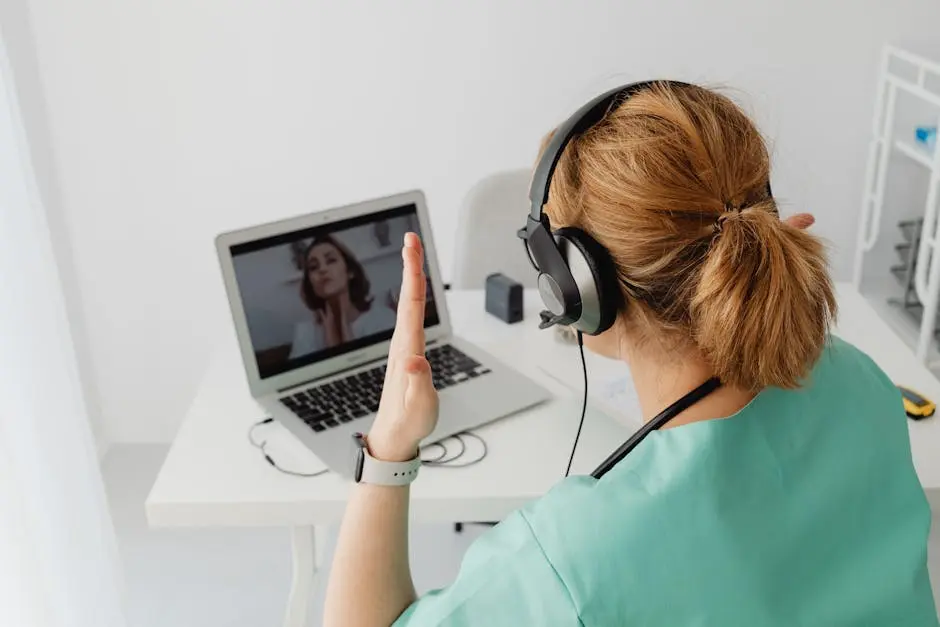Understanding the Evolution of Patient Communication in Healthcare
Patient communication in healthcare has come a long way. From the earliest days of handwritten notes passed between physicians to the era of landline telephones being the primary mode of contact, the evolution has been significant. With the advancement of technology, we now find ourselves in an age where digital communication plays a crucial role in patient care.
The shift towards digital communication methods has revolutionized how patients interact with their healthcare providers. Emails, text messages, and online portals have made it easier for patients to schedule appointments, receive test results, and access their medical records with just a few clicks. This convenience has not only improved patient satisfaction but also streamlined the healthcare process.
In today’s fast-paced world, where time is of the essence, the ability to communicate effectively and promptly with patients is essential. Healthcare providers are constantly seeking ways to enhance patient communication to ensure better health outcomes. The evolution of patient communication continues to drive improvements in the delivery of healthcare services.
With the increasing reliance on technology in healthcare, the need for secure and efficient communication channels has never been more critical. Patients expect to be able to reach their providers easily and promptly, and healthcare organizations must adapt to meet these expectations. Understanding this evolution is key to embracing the future of patient communication in healthcare.
Challenges Faced by Traditional Communication Methods
While traditional communication methods have served healthcare providers for decades, they are not without their challenges. The reliance on phone calls can lead to long wait times for patients trying to reach their providers, causing frustration and delays in care. Additionally, missed calls and voicemails can result in miscommunication and errors in treatment.
Furthermore, traditional communication methods lack the flexibility and efficiency that modern healthcare demands. In an age where instant gratification is the norm, waiting on hold or playing phone tag is no longer acceptable. Patients expect seamless communication that fits into their busy lives, and traditional methods often fall short in meeting these expectations.
Privacy and security are also major concerns with traditional communication channels. Sharing sensitive information over unsecured phone lines poses a risk to patient data confidentiality. As regulations surrounding patient privacy become more stringent, healthcare providers need to reassess their communication methods to ensure compliance and protect patient information.
As healthcare continues to evolve, addressing the challenges of traditional communication methods is paramount. The need for a more efficient, secure, and patient-centric communication solution has never been greater. VoIP offers a way to overcome these challenges and usher in a new era of patient communication in healthcare.
The Role of VoIP in Improving Patient Care and Accessibility
Voice over Internet Protocol (VoIP) technology has emerged as a game-changer in the healthcare industry. By enabling voice communication over the internet, VoIP offers healthcare providers a cost-effective and versatile solution for patient communication. With VoIP, providers can make and receive calls from anywhere with an internet connection, increasing accessibility and flexibility.
One of the key advantages of VoIP is its ability to integrate with other digital healthcare systems seamlessly. By merging voice communication with electronic health records (EHR) and telehealth platforms, VoIP streamlines information sharing and enhances care coordination. This integration leads to improved efficiency and better outcomes for both patients and providers.
VoIP also enhances the patient experience by offering features such as video calls, voicemail-to-email transcription, and call forwarding. These tools empower patients to communicate with their healthcare team in ways that are convenient and effective. Patients can now access care remotely, reducing the need for in-person visits and improving overall accessibility to healthcare services.
The scalability of VoIP makes it suitable for practices of all sizes, from solo practitioners to large healthcare systems. Its cost-effectiveness and flexibility make it an attractive option for providers looking to modernize their communication infrastructure. As healthcare continues to embrace digital transformation, VoIP is poised to play a crucial role in shaping the future of patient communication.
Enhancing Telehealth Services Through VoIP Integration
Telehealth services have experienced unprecedented growth in recent years, with virtual care becoming a standard part of healthcare delivery. VoIP integration enhances telehealth by providing a reliable and secure platform for virtual consultations and remote monitoring. Patients can connect with their providers from anywhere, improving access to care and reducing barriers to treatment.
The synergy between VoIP and telehealth extends beyond video consultations. With VoIP, healthcare providers can offer additional communication channels such as messaging and file sharing, enriching the patient-provider dialogue. Real-time communication facilitated by VoIP ensures that patients receive timely guidance and support, leading to better engagement and adherence to treatment plans.
Furthermore, VoIP integration enables seamless collaboration among healthcare teams, allowing for quick consultations and information sharing. Specialists can connect with primary care physicians, nurses, and other providers in real-time, leading to more comprehensive care for patients. This interoperability is key to delivering integrated and patient-centered telehealth services.
As telehealth becomes an integral part of modern healthcare, the role of VoIP in supporting these services cannot be overstated. The combination of VoIP and telehealth offers a dynamic and patient-focused approach to care delivery. By leveraging VoIP technology, healthcare organizations can bridge the gap between patients and providers, ultimately improving patient outcomes and satisfaction.
Share to social media

The Coming Age of AI in Healthcare: Is Your Organization Ready?

Mitel’s Bankruptcy: An Alarm Bell for Enterprises Still Using Legacy PBX

Life After Mitel: What to Know for Hotels and Resorts — And What to Do Now

The Future of Customer Engagement: How CCaaS Transforms Interactions


